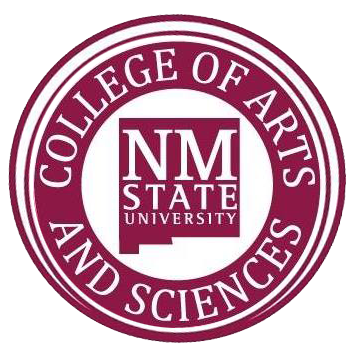Hundreds of half-dollar-sized robots are changing the way the 2.5-meter Sloan Digital Sky Survey telescope at Apache Point Observatory helps scientists see the universe.
“I definitely feel like we're standing on the shoulders of giants trying to usher in a bold new era of survey science,” said Joe Burchett, astronomy assistant professor at New Mexico State University. “The past 20 years of SDSS has delivered an enormous volume of high-quality data that has set a high standard for what we can do. It is my and professor (Jon) Holtzman's job to ensure that we can maintain that high-data quality while surveying the sky much more rapidly with completely new hardware and software controlling it.”
Apache Point Observatory, located in Sunspot, about 18 miles south of Cloudcroft in the Sacramento Mountains, is home to four telescopes: the 3.5-meter Astrophysical Research Corp telescope; the 2.5-meter Sloan Foundation telescope; the 0.5-meter ARC Small Aperture Telescope; and NMSU’s 1.0-meter telescope. The cluster of telescopes sit on a mountain 9,200 feet above sea level. The night sky seen from APO is among the darkest in the U.S.
“The SDSSas been able to produce such a large volume data because we can take spectra of hundreds of objects at one time,” Burchett said. “This has been achieved for the last 20 years by milling metal plates with holes drilled to match the positions of galaxies, stars and quasars in some area of the sky. Fiber-optic cables are then plugged on one end to the holes in the plates and fed into the spectrograph on the other end. The spectrograph then splits the light wavelength by wavelength and records the dispersed light from each fiber.”
With the new Flight Robotic Focal Plane System (FPS), tiny robots have replaced giant metal plates with up to a thousand holes requiring a staff member to manually plug-in hundreds of special fiber optic cables that aligned with the area of the sky that astronomers planned to observe. Now hundreds of tiny robots do the work. Each has its own patrol area and a little arm. As it rotates the arm goes in and out, controlling the location of the fiber.
“Before we were limited on the number of fields we could observe per night, based on how many plates had been plugged,” said Jamey Eriksen, the director of operations at Apache Point Observatory. “Now we can dynamically load up a new field and within five minutes, have the robots position the fibers exactly where they’re needed and researchers can start observing on a new project.
“This is a major upgrade to the ability of the telescope in that it allows you to have programmable fields and move the fibers in the focal plane, on the fly, to different fields much faster than we could do before.”
The 2.5-meter SDSS telescope has been off-line since last summer to begin the process of transitioning the telescope for its new hardware and software. The new equipment was installed in December, and Ericksen and NMSU researchers began the process of commissioning the instrument. This requires a series of tests to configure the robots’ accuracy in aligning the fiber optic cables’ filaments that capture light from galaxies.
A number of former NMSU students are key members of the SDSS team central to commissioning process, and current students will help assure the quality of data they collect. The commissioning process is expected to be completed this month.
“I had always revered the operation SDSS had going on, with people manually plugging hundreds of fibers into each plate and those plates getting manually swapped on and off the telescope every hour,” Burchett said. “SDSS transformed modern astronomy with that mode of operation and brought us where we are with survey science. Now, to take the next transformational step, we need to attain a survey speed, efficiency and volume that can only be achieved by a fully robotic fiber positioning system.”
Burchett’s research is focused on the evolution of galaxies and aligns with many of the SDSS-V scientific initiatives, from understanding the impacts of supermassive black holes on host galaxies to the formation and evolution of galaxy clusters and the galactic winds that carry gas enriched with the building blocks of life throughout the universe.
“Joining the collaboration has extended my worldwide network of leading scientists working in these fields even more than I realized it would, while providing me and my students with unprecedented state-of-the-art datasets that will enable us to break our own new ground in addressing some of the biggest questions in extragalactic astrophysics,” Burchett said.
Watch the “dance of light” in the first test of the Flight Robotic Focal Plane System for the Sloan Foundation Telescope.
